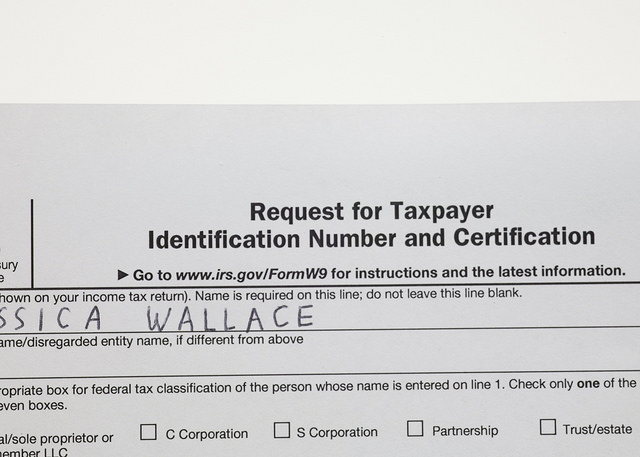Difference Between TIN and TAN
Every country across the globe imposes taxes on both citizens and corporations. With so many different taxes and associated tax numbers for each country, it is no wonder that people become confused as to which numbers are applicable in varying circumstances.
Two numbers that are frequently confused are TIN and TAN. The Taxpayer Identification Number (TIN) and Tax Deduction and Collection Account Number (TAN) may look similar at first but in reality these numbers are vastly different. However, both of these numbers have the purpose of being an identifying tax number.

What is TIN?
The TIN is an acronym for the Taxpayer Identification Number. Any entity which pays Value Added TAX (VAT) is required to have a TIN number. This includes, but is not limited to, traders, brick-and-mortar retailers, e-commerce (online) stores, product or service manufacturers, or any other type of trader that adds value to products or services for consumers. It is a mandatory requirement which these entities must adhere to.
The TIN is beneficial for both state and the individual entity. A Taxpayer Identification Number gives the entity an opportunity to have one centralized place for all VAT transactions. It can clearly see how much VAT has been collected, paid, or should be paid in the near future.
The introduction of the TIN was a method to modernize previous systems of taxation. The aim was to use Information Technology (IT) to handle all tax-related activities, including processing, accounting, collection and monitoring of taxes. Furthermore, the TIN paved the way for overall monitoring as the Information Technology processes involved makes it possible to access the data of an entity in all states, regardless of where the entity was initially registered.
In most countries it is the responsibility of the Income Tax Department to provide a TIN to an entity. However, the Internal Revenue Service (IRS) or Social Security Agency will assign the TIN in the United States.

What is TAN?
The Tax Deduction and Collection Account Number (TAN) is assigned to banks or companies. This number is used to keep track of Tax Collections (TCS) and Tax Deductions (TDS) that take place at the source.
A basic example of a company that requires a TAN is one where the salary of employees has tax deducted from the salary before paying the net amount to the employee. The Income Tax Department will assign the TAN to a company.
Difference between TIN and TAN
-
Composition of number for TIN and TAN
The TIN consists of 11 numeric digits only. The state in which the TIN was issued is denoted by the first two digits.
TAN is an alphanumeric number which contains both numbers and letters. The first four digits are alphabetic letters denoting the state where the number was issued and the initial of the entity which owns the TAN. The next five digits are random numbers, and the last digit is an alphabetic letter which serves as a check.
-
Reason for number
A TIN is used to track all transactions relating to VAT for a specific company or individual. It will indicate when VAT was paid and when it must be paid in future.
The TAN helps state agencies to monitor tax collected at source (TCS) and tax deducted at source (TDS). All documentation should contain this identifying number for reference purposes.
-
Entities to register
Any entity or individual that is liable to pay VAT or pays VAT must have a TIN code. Exporters, manufacturers, physical and online retailers must all register for TIN.
Any entity which deducts tax or collects tax at its source is mandated to have a TAN number. This could be any bank or company which deducts tax from its employees’ salaries.
-
Assigning agency for TIN and TAN
TIN is assigned to entities by the Internal Revenue Service or the Social Security Agency; TAN is assigned by the Income Tax department.
TIN vs. TAN: Comparison Chart

Summary of TIN Vs. TAN
- TIN is an 11 digit code consisting of only numbers; whereas TAN is an alphanumeric code containing numbers and alphabetic letters.
- The first digits in both the TIN and TAN will indicate in which state the number was issued to the entity.
- TIN is used to monitor VAT transactions under one number; TAN monitors the transactions of an entity that relate to tax collected or deducted at the source.
- Any entity which is supposed to pay VAT or who pays VAT must register to be issued a TIN code; any entity which collects or deducts tax at source must register for a TAN code.
- The codes are assigned by the Internal Revenue Service or Social Security Agency in the case of TIN and by the Income Tax Department in the case of TAN.
- Both TIN and TAN will be issued by the state in which an entity applies; however, the same code is valid in all states and any state can monitor the entity’s transactions.
- Both TIN and TAN allows state agencies to monitor the tax transactions of entities. Furthermore, it makes tax evasion by businesses less likely due to the stricter control measures.
- Difference Between TIN and TAN - June 20, 2018
- Difference Between Bitcoin and Litecoin - June 1, 2018
- Difference Between Walmart and Amazon - May 23, 2018
Search DifferenceBetween.net :
Leave a Response
References :
[0]Image credit: https://www.flickr.com/photos/stockcatalog/40067330885
[1]Image credit: https://pixabay.com/en/tax-taxes-government-refund-word-1351881/
[2]Dili. “Difference Between TIN and TAN.” DifferenceBetween.com. June 19, 2017, www.differencebetween.com/difference-between-tin-and-vs-tan
[3]Hardy, Pank. “PAN, TAN, TIN and GSTIN Numbers: What’s The Difference.” Techno Geek. September 4, 2017, http://technogeek.review/pan-tan-tin-and-gstin-numbers-whats-the-difference/
[4]Nderitu, Georgina. “Difference between Pan, Tan, and Tin.” DifferenceBetween.net. August 29, 2017, www.differencebetween.net/business/accounting-business/difference-between-pan-tan-and-tin
